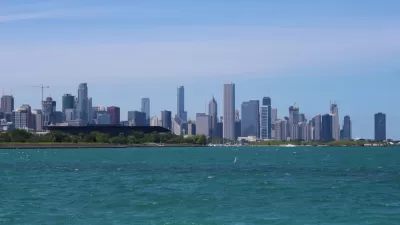The New Zealand Transport Agency’s new report, "Transport Impacts on Wellbeing and Liveability" provides guidance for transportation planning that achieves fairness, neighborliness, respect, community identity, pride, fitness, and health.

In 2019 the New Zealand Government produced its first Well-Being Budget which is designed to achieve broad national well-being goals. The New Zealand Transport Agency’s new report, "Transport impacts on wellbeing and liveability," provides guidance for developing a transport system that helps achieve these goals.
Below are definitions used in New Zealand’s Well-Being Budget:
Well-Being is when people are able to lead fulfilling lives with purpose, balance and meaning to them. Giving more New Zealanders capabilities to enjoy good well-being requires tackling the long-term challenges we face as a country, like the mental health crisis, child poverty and domestic violence. It means improving the state of our environment, the strength of our communities and the performance of our economy.
Livability refers to the environmental and social quality of an area as perceived by residents, employees, customers and visitors. This includes safety and health (traffic safety, personal security and public health), local environmental conditions (cleanliness, noise and air quality), the quality of social interactions (neighbourliness, fairness, respect, community identity and pride), opportunities for recreation and entertainment, aesthetics and existence of unique cultural and environmental resources (eg historic structures, mature trees and traditional architectural styles).
The report also includes analysis of how transportation affect Hauora, a Māori view of health which covers the physical, mental, social and spiritual well-being.
The report concludes that transport has a significant effect on well-being, particularly local transport initiatives that affect how people move around in their local community. The benefits of walking and active transport are well documented, and designing communities to facilitate movement using active transport modes has major benefits for well-being. This is not just in terms of physical health, but also in terms of the increased connectedness between people in communities facilitated by active transport modes. Where active transport modes are more available, there are more interactions between those living in that community.
The concept of livability highlights that the design of the community spaces has a significant impact on transport modes and the transport corridors that the transport options utilize. Understanding these links is important if the benefits that can come from shifts in transport utilization are to be achieved.
The study recommends replacing conventional transportation economic analysis with contribution analysis, which analyzes the many impacts resulting from a policy or project. The report explores how transport agencies can apply this approach to evaluating policies and programmes, and the data needed to apply such analysis.
[Ed's note: AP style chooses the hyphenated "well-being" as the authoritative spelling for this term. The AP also chooses "livability" over "liveability." New Zealand clearly went a different direction with the title of this report.]
FULL STORY: Transport Impacts on Wellbeing and Liveability

Trump Administration Could Effectively End Housing Voucher Program
Federal officials are eyeing major cuts to the Section 8 program that helps millions of low-income households pay rent.

Planetizen Federal Action Tracker
A weekly monitor of how Trump’s orders and actions are impacting planners and planning in America.

Ken Jennings Launches Transit Web Series
The Jeopardy champ wants you to ride public transit.

California Invests Additional $5M in Electric School Buses
The state wants to electrify all of its school bus fleets by 2035.

Austin Launches $2M Homelessness Prevention Fund
A new grant program from the city’s Homeless Strategy Office will fund rental assistance and supportive services.

Alabama School Forestry Initiative Brings Trees to Schoolyards
Trees can improve physical and mental health for students and commnity members.
Urban Design for Planners 1: Software Tools
This six-course series explores essential urban design concepts using open source software and equips planners with the tools they need to participate fully in the urban design process.
Planning for Universal Design
Learn the tools for implementing Universal Design in planning regulations.
Ada County Highway District
Clanton & Associates, Inc.
Jessamine County Fiscal Court
Institute for Housing and Urban Development Studies (IHS)
City of Grandview
Harvard GSD Executive Education
Toledo-Lucas County Plan Commissions
Salt Lake City
NYU Wagner Graduate School of Public Service





























